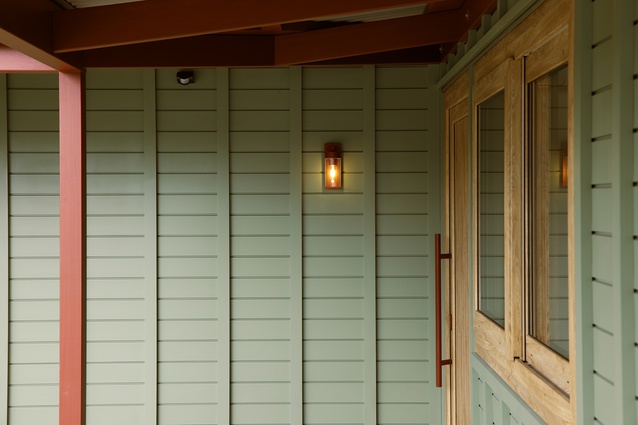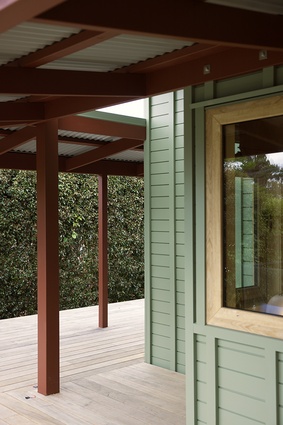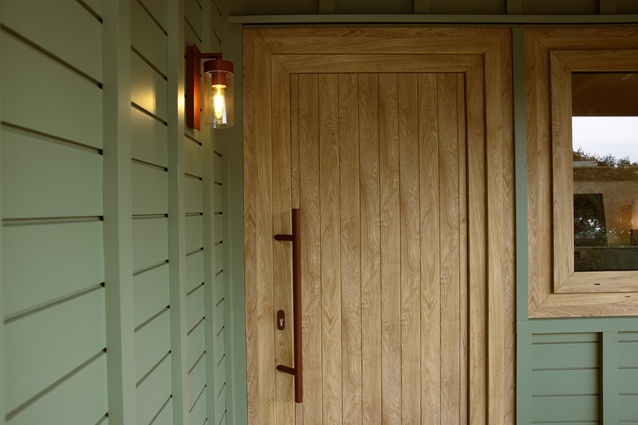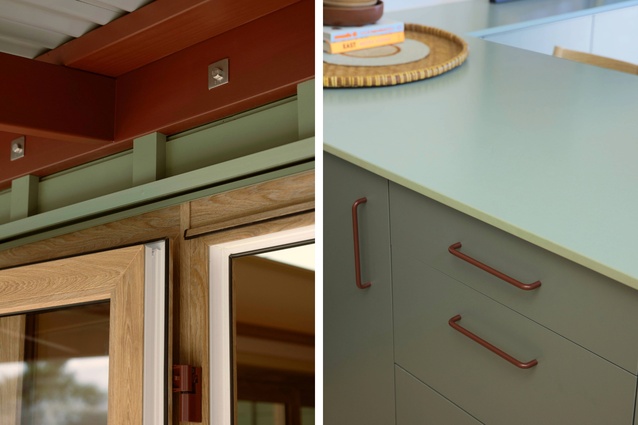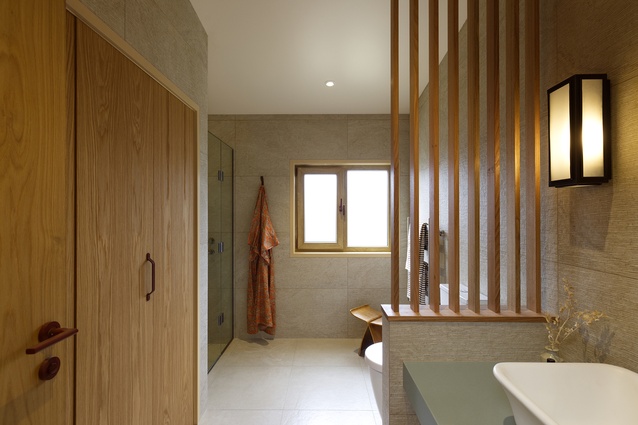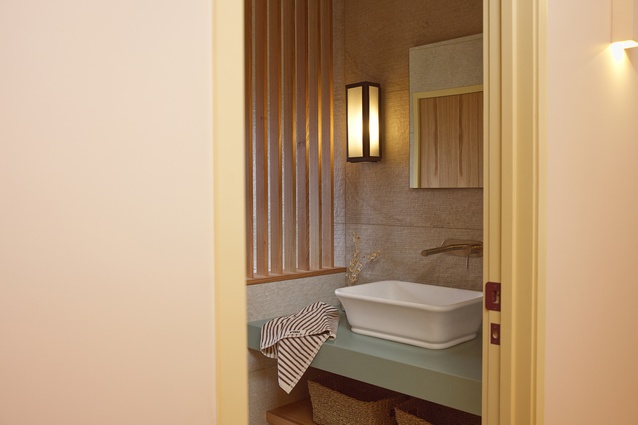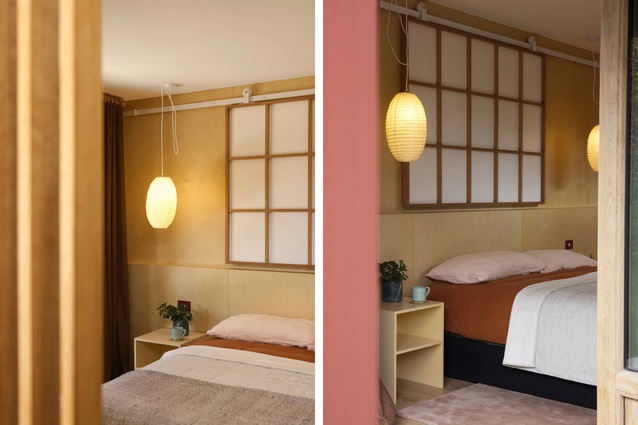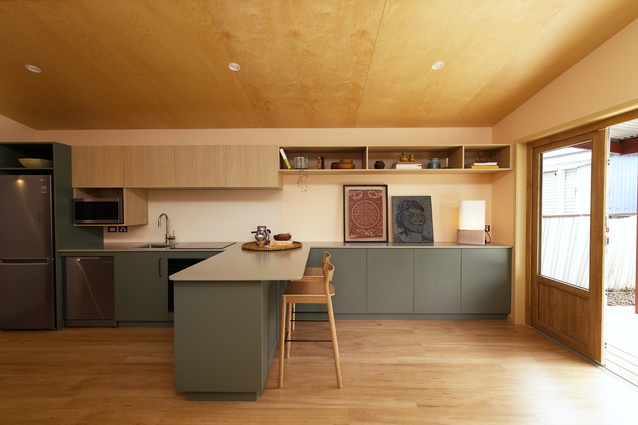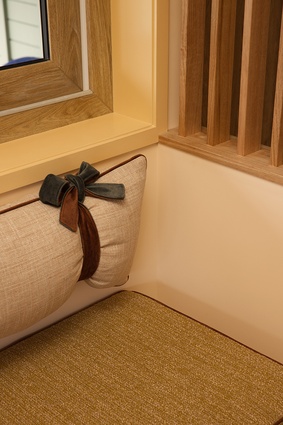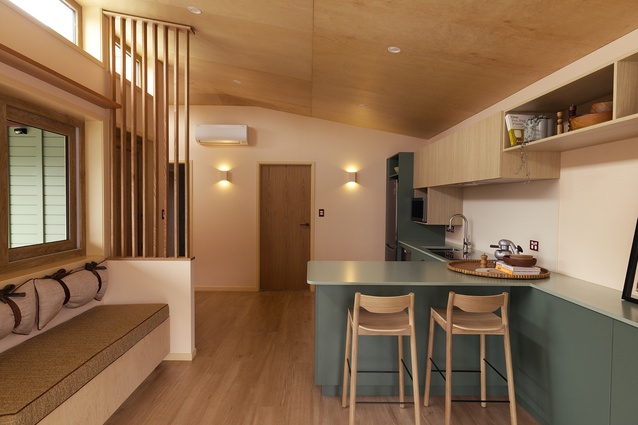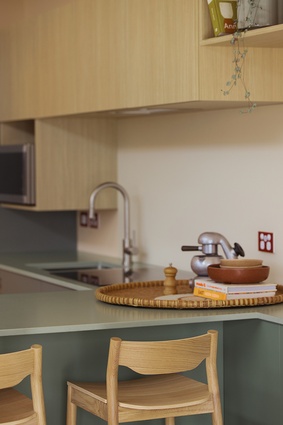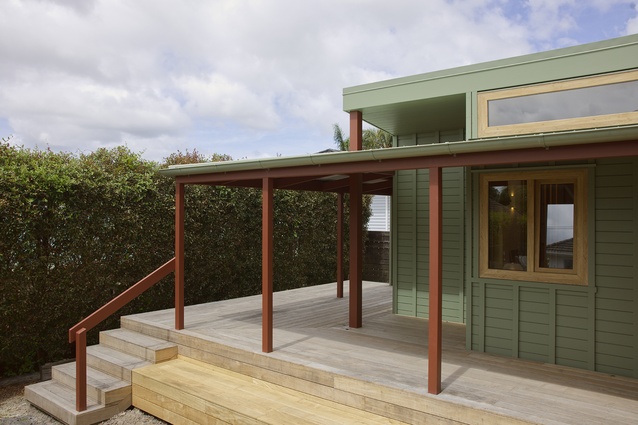A mindful sanctuary
Matipo Tea House started from the noble motivation to reduce tension and anxiety for a family member with dementia and to create a tranquil space and ritualistic dimension in which to enjoy everyday life.
The brief given to Kate Pilot and Natalia Glucina of Kanat Studio, was to create a private dwelling on the back section of a long 809m2 property in Auckland that would accommodate the needs of the client’s mother — returning to New Zealand from Australia to live with her son due to the onset of dementia.
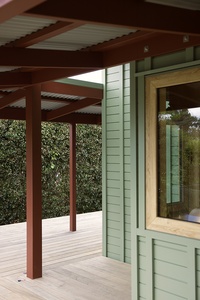
With a modest $500k budget, Kanat Studio first considered a prefabricated home, however limited site access meant this became a new build. The site also presented privacy issues with neighbouring properties overlooking on all four sides prompting the designers to “blur the threshold between the built form and a lush garden” with the idea that as the garden matured the house would become one with the landscape.
Kanat Studio engaged the services of Ethan Hunter Architect to help them with the architectural design and consenting. The structure would take on a simple two bedroom form and allow for future accessibility requirements including a live-in carer. Alongside functional requirements and specific health needs, the client wanted to avoid a sterile clinic environment and have a space that felt warm and comfortable.
Says Kate Pilot on the interior design: “The concept strongly focuses on human wellbeing and spatial functionality, tailored to meet the needs of an individual living with dementia. Familiarity, privacy, wandering paths, visual sight lines, and a palette of natural materials were the key sub concepts identified through our briefing process and research.”
A modular approach using a board and batten exterior cladding was chosen due to its simplicity and cost-effectiveness with the façade informing the design language into the interior. Bright pops of colour were included to create visual impact.

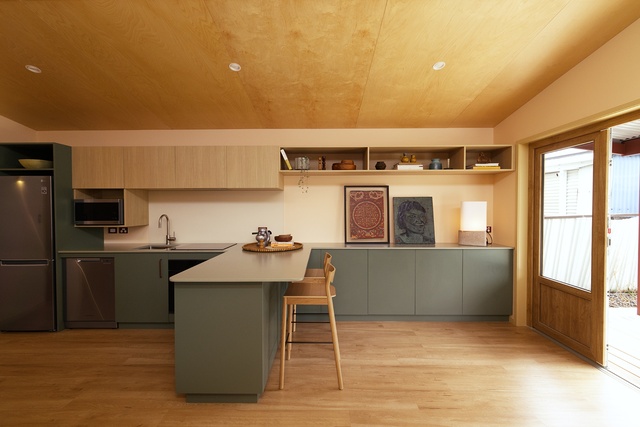
Kanat Studio’s design solution also sensitively incorporated a sense of independence and wayfinding to empower the resident and provide them with sense of comfort and safety.
To achieve this, the designers recreated recognisable elements by echoing familiar spaces from the resident’s past. “We looked at the landscape and architecture of their Kuranda home and explored their passions to consider how these could be reflected in the new dwelling,” says Pilot.
To create a sense of security and autonomy the balance of privacy and care was a careful consideration. With the house being in close proximity to the client’s home, Natalia Glucina says “We wanted to avoid the feeling of being ‘watched over’ while still allowing the client to check in on her.” A sense of privacy would be further developed as the garden matured.


Bold colour and material selection was used to address the visual challenges faced by those with dementia. This includes reduced contrast sensitivity and poor depth perception. Aside from being an economical and effective design tool, the use of bold colour was used to assist in orientation and memory. The scheme avoids strong contrasting colours and instead opts for “Natural materials for gentle visual stimulation, familiarity and sense of connection to the land”, says Glucina.
Further wayfinding and safely measures were implemented by the design team after recognising the tendency for people with dementia to wander. Says Pilot: “We also considered how we could create ‘wandering paths’ through the home and garden that would lead the resident towards engaging activities like gardening — activities that would stimulate her mind and body.”
Kanat Studio’s thoughtful response to this resident’s needs has resulted in a house that not only facilitates wellbeing but provides a beautiful backdrop and safe haven for the simple rituals and pleasures of everyday life.


